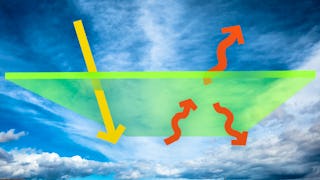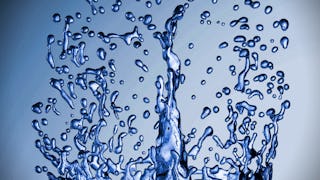This class provides a series of Python programming exercises intended to explore the use of numerical modeling in the Earth system and climate sciences. The scientific background for these models is presented in a companion class, Global Warming I: The Science and Modeling of Climate Change. This class assumes that you are new to Python programming (and this is indeed a great way to learn Python!), but that you will be able to pick up an elementary knowledge of Python syntax from another class or from on-line tutorials.


Global Warming II: Create Your Own Models in Python

Instructor: David Archer
Access provided by Coursera Learning Team
16,351 already enrolled
(54 reviews)
Skills you'll gain
Details to know

Add to your LinkedIn profile
6 assignments
See how employees at top companies are mastering in-demand skills


Earn a career certificate
Add this credential to your LinkedIn profile, resume, or CV
Share it on social media and in your performance review

There are 5 modules in this course
This class is intended to complement a Coursera class called Global Warming I: The Science and Modeling of Climate Change, which presents much of the background to the material here. In this class you'll be using spreadsheets (maybe) and Python (definitely) to do some simple numerical calculations on topics in Earth System Science. The model you'll be working on this week is based on material from Unit 3 of that class, called First Climate Model.
What's included
2 videos6 readings1 assignment1 programming assignment1 peer review
The ideas behind this model were explained in Unit 7, Feedbacks, in Part I of this class. First we get to generate simple linear "parameterization" functions of planetary albedo and the latitude to which ice forms (colder = lower latitude ice). Second, for any given value of the solar constant, L, we'll use iteration to find consistent values of albedo and T, to show the effect of the ice albedo feedback on Earth's temperature, running away to fall into the dreaded "snowball Earth".
What's included
1 video3 readings1 assignment1 programming assignment1 peer review
Ice flows like extra-thick molasses, downhill. The shape of the ice sheet (altitude versus distance across) is determined by the relationship between ice surface slope and the flow rate of the ice.
What's included
1 video3 readings1 assignment1 programming assignment1 peer review
Planetary rotation and fluid flow were explained in Part I of this class, Unit 6, on Weather and Climate.
What's included
1 video1 reading2 assignments3 programming assignments1 peer review
Background for this model was presented in Part I of this class, Unit 9, The Perturbed Carbon Cycle.
What's included
1 video4 readings1 assignment1 programming assignment1 peer review
Instructor

Offered by
Why people choose Coursera for their career




Learner reviews
54 reviews
- 5 stars
54.71%
- 4 stars
20.75%
- 3 stars
13.20%
- 2 stars
3.77%
- 1 star
7.54%
Showing 3 of 54
Reviewed on Jun 19, 2016
Really good course. Short, content-filled lectures and practical application!
Reviewed on Jan 30, 2021
Great course, really interesting! The difficulty of the course didn't follow a linear growth, as week 4 was much more difficult than the others.
Reviewed on Apr 14, 2020
Great course for those who want to learn a little more about modelling, python and the climate!
Recommended if you're interested in Physical Science and Engineering

The University of Chicago

University of Colorado Boulder

Edureka

University of Geneva

Open new doors with Coursera Plus
Unlimited access to 10,000+ world-class courses, hands-on projects, and job-ready certificate programs - all included in your subscription
Advance your career with an online degree
Earn a degree from world-class universities - 100% online
Join over 3,400 global companies that choose Coursera for Business
Upskill your employees to excel in the digital economy
